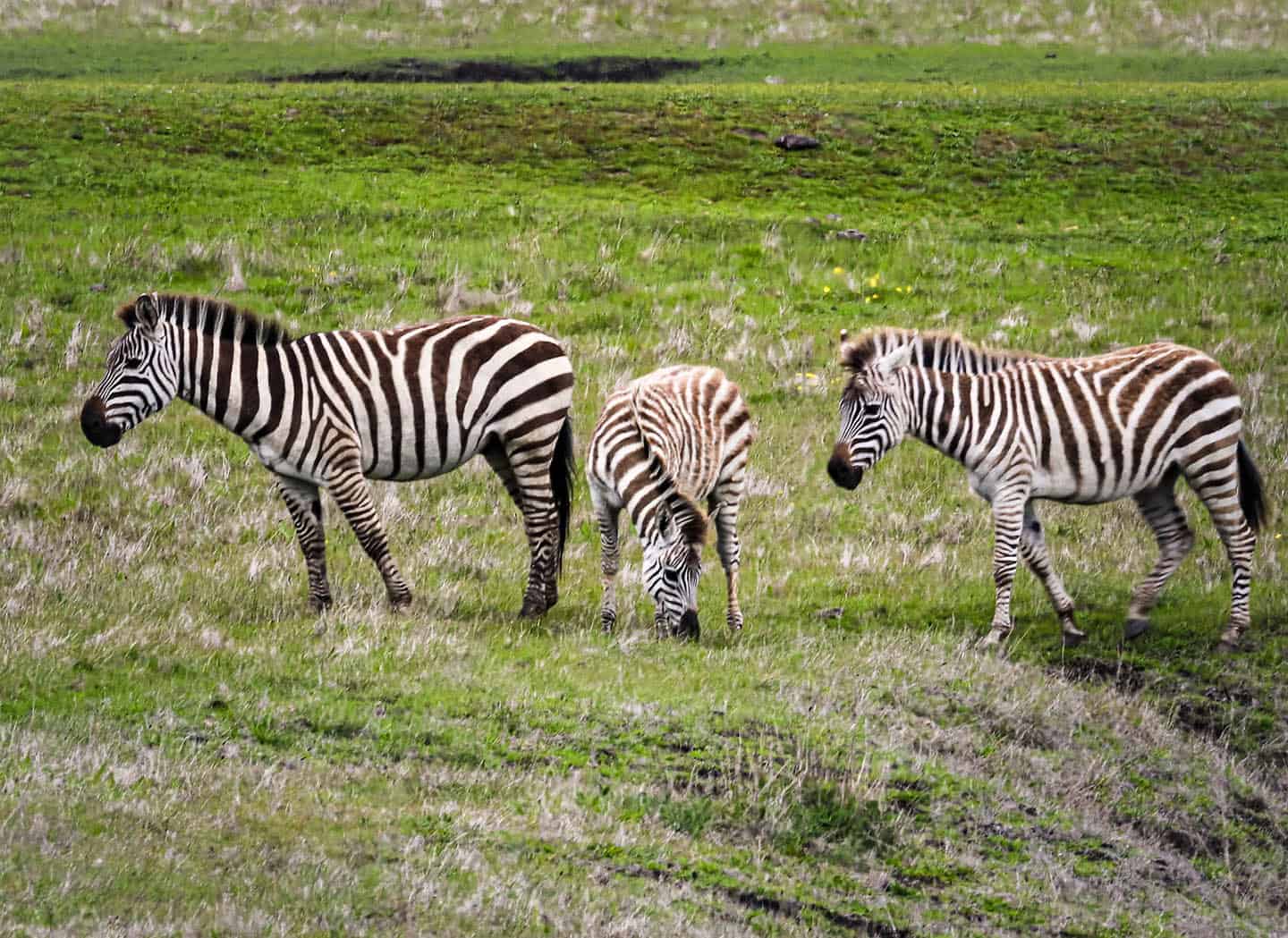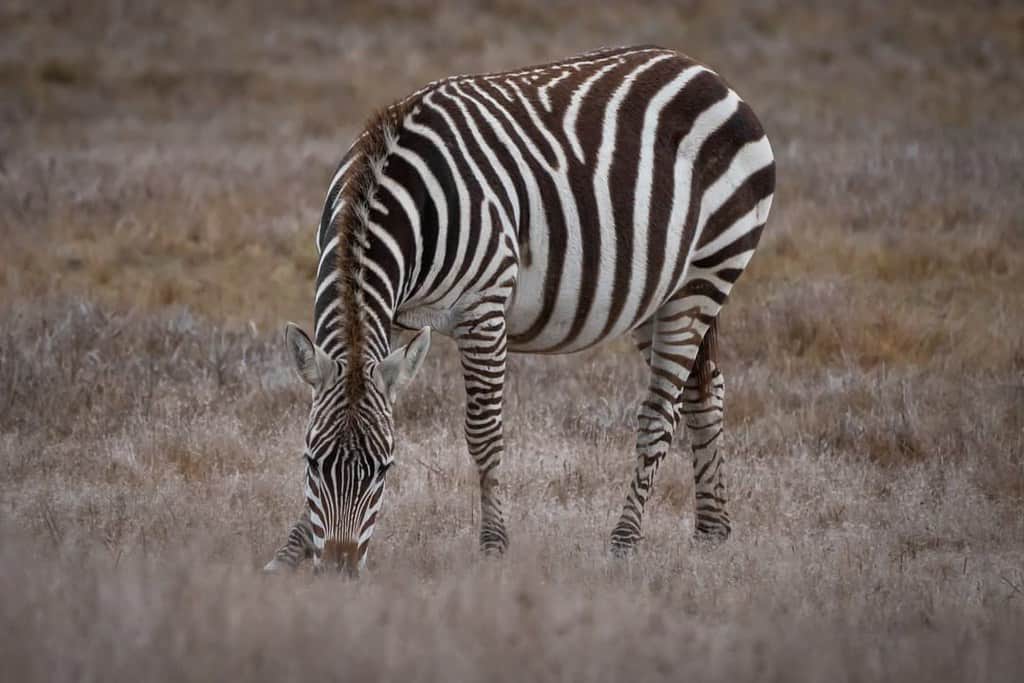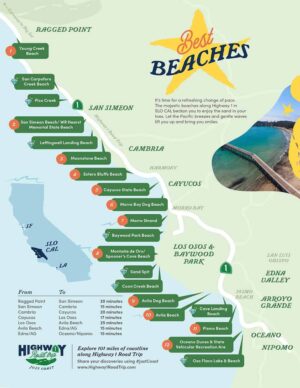What’s black and white and visible from Highway 1? Believe it or not, zebras are a common sight for drivers passing Hearst Castle, between San Simeon and Ragged Point. The gorgeously striped species is native to Africa, but the herd here descends from zebras in William Randolph Hearst’s private zoo. A who’s-who of the early 20th century, Hearst built the zoo on his San Simeon ranch, which stands beside Highway 1. He was an animal lover, and an excellent host who enjoyed entertaining guests with exotic and non-native species. Hearst kept his menagerie of caged animals on “Animal Hill,” while field animals roamed the ranch freely. Though the zoo had to be dismantled eventually, some of those field animals remained on the land and their descendents roam there today. As you road trip past Hearst Ranch along Highway 1, keep your eyes open for a glimpse of black and white stripes. The zebras can easily be seen from the road throughout the year.
Explore San Simeon & Ragged Point
Hearst Castle Zoo
The Hearst Castle Zoo was originally called the “Hearst Garden of Comparative Zoology,” and was the world’s largest private zoo at the time. As an animal lover, Hearst wanted his creatures to live in as natural a habitat as possible — more like a safari than a zoo. When guests to Hearst Castle drove up the hill, they passed through fields of Hearst’s wild animal residents. Fifty species of herbivores roamed freely across the ranch, including bison, fallow deer, antelope, zebras, elk, camels, kangaroos, and giraffes. Hearst also owned a menagerie on “Animal Hill,” just north of the estate, with confined animals. Animal Hill featured an ever-changing cast of inhabitants, including grizzly bears, lions, tigers, leopards, jaguars, orangutans, monkeys, and an elephant. Hearst employed a veterinarian on staff at Hearst Castle during the 1930s to ensure the animals were exercised, fed properly, and carefully controlled. In 1937, Hearst encountered financial issues and had to dismantle the zoo over the course of 15 years. Many animals were donated to public zoos or sold to private collectors, but Hearst’s zoo was never fully dismantled. When Hearst Castle became property of the State in 1958, a large number of field animals still cruised on the ranch. Several descendant species — not only zebras — are believed to live there to this day.

Where to see the zebras today
Just as in Hearst’s time on the “enchanted hill,” herds of zebras can be seen wandering across Hearst Ranch from Highway 1. The sight of their beautifully patterned coats never fails to awe and delight visitors and locals alike. But be warned: these animals are still wild. Do not approach the zebras as they’re known to be territorial (as a defense against predators) and have been known to kick and bite. In fact, a zebra’s kick has been known to break the jaws of lions. So be smart, use caution, and stay back.
As of 2019, Hearst Ranch saw 126 zebras roaming the land, in addition to elk descended from Hearst’s zoo. Look closely on any given day, and you’re almost guaranteed to see zebras, though that’s not as likely in the dry season. The zebras often roam from the northernmost point of the Hearst Castle Visitor Center to San Simeon Creek road to the south. Look on the east side of Highway 1, toward Hearst Castle, not west toward the ocean. Pull over to the side of the road if you spot one, and you’re sure to see more as they move in herds. (Those herds are also called “dazzles” — see below.) Bring binoculars if you want a closer look, but do not trespass onto Hearst Ranch.

Zebra Facts
Zebras are related to horses and donkeys, but unlike those species, zebras are endangered. There are three subspecies: Grévy’s zebra, plains zebra and mountain zebra, all of which are near-threatened to endangered. (In fact, one type of plains zebra, the quagga, has been extinct since the 19th century.) When gathered in groups, zebras are called a “dazzle,” as their stripes become an optical illusion that prevents predators from seeing individuals. But what about the age-old question: are zebras white with black stripes or black with white stripes? Turns out, zebras are black-skinned with white and black stripes on their coats, and each zebra’s stripe pattern is unique, like a fingerprint. Independent, fascinating and free, zebras have been widely considered “untrainable,” but there are a few recent cases of successfully domesticated zebras. On Hearst’s Ranch, the zebras roam freely as they do in Africa, and create a stunning sight for passersby along Highway 1.



